In recent years, the contact grill market has seen a surge in popularity, not just in the culinary world but also among consumers seeking convenient and healthy cooking solutions. This article delves into the intricacies of the contact grill industry, exploring the factors that have fueled its growth and the strategies that wholesalers are employing to capitalize on this trend. We’ll examine the latest sales data, consumer preferences, and the challenges and opportunities that face those in the contact grill wholesaling business. Through real-world case studies and expert insights, we aim to provide a comprehensive overview of the contact grill market and offer valuable tips for wholesalers looking to thrive in this dynamic sector.
The Rise of Contact Grills in the Western Markets
The surge in popularity of contact grills in the Western markets has been nothing short of remarkable. These compact cooking appliances, which use two plates to seal in food, have become a staple in many homes, offering a convenient and health-conscious alternative to traditional grilling methods. The shift towards healthier eating habits, combined with the convenience and ease of use, has propelled contact grills to new heights.
As the demand for contact grills has skyrocketed, so too has the innovation within the industry. Manufacturers are continuously pushing the boundaries, introducing features like adjustable heat settings, non-stick surfaces, and even Bluetooth connectivity for remote control. This wave of technological advancements has not only enhanced the user experience but has also broadened the appeal of contact grills to a wider audience.
Consumer preferences have shifted significantly over the years, with an increasing focus on quick, efficient, and nutritious cooking methods. Contact grills fit perfectly into this trend, as they allow for the cooking of a variety of foods, from meats and vegetables to even sandwiches and pizzas, all in a fraction of the time compared to traditional grilling. The portability of these appliances has also played a crucial role in their rise, as more people are looking for versatile kitchen gadgets that can easily be stored away when not in use.
In Europe, the contact grill market has seen particularly strong growth, driven by the region’s love for outdoor cooking and social gatherings. The ease of clean-up, the ability to cook a variety of dishes, and the health benefits of grilling without the addition of extra fats have made contact grills a must-have for many European households. Additionally, the growing trend of health-conscious cooking has led to a surge in organic and low-fat products, which are perfectly suited to be prepared on a contact grill.
The United States has followed a similar trajectory, with contact grills becoming increasingly popular in urban areas where space is at a premium. The convenience of these grills in small kitchens and apartments has been a significant factor in their adoption. Moreover, the American consumer’s penchant for fast-paced living and the desire for healthier options have contributed to the rise of contact grills in the U.S.
From a retail perspective, contact grills have been a hit with wholesalers and distributors. The demand for these appliances has created a lucrative market segment, with many businesses seeing significant sales increases. Wholesalers have played a pivotal role in ensuring that contact grills are readily available to consumers, often offering bulk discounts and competitive pricing to retailers.
The rise of contact grills has also been fueled by the rise of social media and influencer marketing. As more people share their cooking experiences online, the popularity of contact grills has grown exponentially. Influencers and food bloggers are often seen using these grills to create mouth-watering dishes, which in turn sparks interest and sales.
Despite the surge in popularity, contact grills are not without their challenges. Some consumers have expressed concerns about the potential for food sticking to the plates, although manufacturers have worked to address this with improved non-stick coatings. Additionally, the initial cost of contact grills can be higher than other cooking appliances, which may deter some potential buyers.
Looking ahead, the contact grill market is expected to continue its upward trend, with manufacturers focusing on further innovation and consumer convenience. The integration of smart technology, such as smart grilling apps that provide real-time temperature control and cooking tips, is likely to further boost sales. As the Western markets continue to embrace health and convenience, contact grills are poised to remain a staple in modern kitchens.
In conclusion, the rise of contact grills in the Western markets is a testament to the evolving culinary landscape and the changing demands of consumers. As the industry continues to evolve, it will be interesting to see how contact grills adapt and what new innovations will emerge to maintain their momentum.
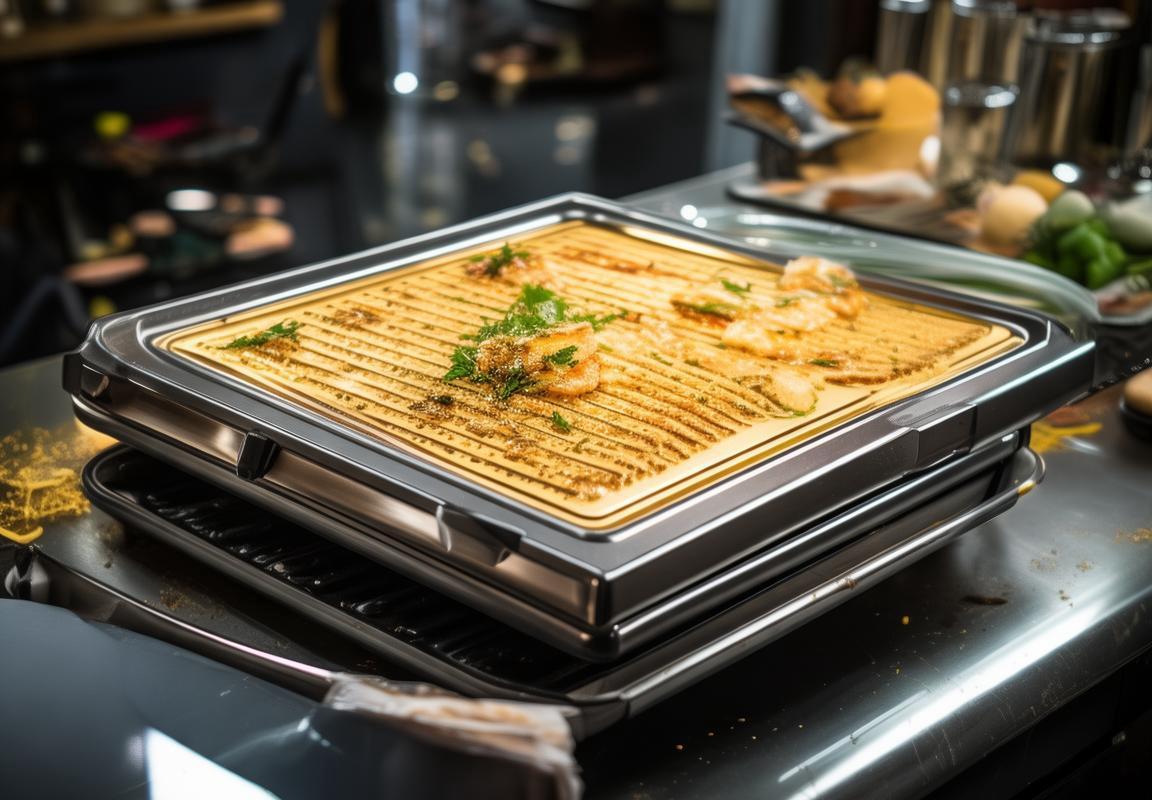
Understanding the Contact Grill Market Dynamics
In the ever-evolving landscape of kitchen appliances, contact grills have emerged as a favorite among consumers in Western markets. The market dynamics surrounding these versatile cooking devices are shaped by a combination of technological advancements, shifting consumer preferences, and the competitive landscape.
Consumer Trends and PreferencesOne of the key drivers behind the growth of contact grills is the increasing demand for healthier cooking options. Consumers are becoming more health-conscious, seeking alternatives to traditional cooking methods that involve higher levels of fat and oil. Contact grills offer a solution by allowing food to cook with its own juices, reducing the need for additional fats. This shift in consumer behavior has fueled the popularity of contact grills, as they cater to the growing market for low-fat, low-calorie cooking.
Technological InnovationsThe continuous development of technology has played a significant role in the market dynamics of contact grills. Modern contact grills come equipped with features like adjustable temperature controls, non-stick surfaces, and even built-in temperature probes. These innovations not only enhance the cooking experience but also ensure that users can achieve consistent and even cooking results. As technology continues to advance, we can expect to see more sophisticated features that cater to the needs of both amateur and professional chefs.
Competitive LandscapeThe contact grill market is not without its competition. Traditional grills, countertop grills, and even air fryers offer similar cooking experiences. However, contact grills have carved out a niche for themselves by focusing on convenience and ease of use. Wholesalers and retailers must navigate this competitive landscape by highlighting the unique selling points of contact grills, such as their compact size, quick cooking times, and ability to cook a variety of foods.
Distribution ChannelsThe way contact grills are distributed also plays a crucial role in market dynamics. Online sales have become increasingly important, with many consumers turning to e-commerce platforms for convenience and a wider selection. Wholesalers must adapt to this shift by ensuring their products are readily available online, as well as through traditional retail channels. The ability to reach customers through multiple distribution channels is essential for maintaining a strong market presence.
Seasonal Variations and PromotionsSeasonal trends and promotional activities can significantly impact the contact grill market. For instance, during the summer months, when outdoor cooking is more popular, sales of contact grills may surge. Wholesalers and retailers often capitalize on these seasonal peaks by offering promotions, discounts, and special deals. Understanding these fluctuations and planning promotions accordingly can help businesses maximize their sales potential.
Regulatory Compliance and SafetyIn the Western markets, regulatory compliance and safety are paramount. Contact grill manufacturers and wholesalers must adhere to strict safety standards and certifications to ensure their products meet the necessary requirements. This not only protects consumers but also builds trust in the brand. Compliance with these regulations is a crucial aspect of market dynamics, as it can affect the overall perception and sales of contact grills.
Market Saturation and Consumer SaturationAs the market for contact grills grows, there is a risk of saturation. With more brands and models available, consumers may become overwhelmed and less likely to purchase new products. Wholesalers need to stay ahead of this trend by offering unique and innovative products that differentiate themselves from the competition. Additionally, understanding the saturation point of the market can help businesses make informed decisions about inventory and expansion.
Global Influence and Cross-Market TrendsThe contact grill market is not confined to a single region; it is influenced by global trends and cross-market dynamics. For example, the success of contact grills in one country may inspire similar products to be developed and marketed in others. Wholesalers and manufacturers must stay informed about these global influences to capitalize on opportunities and anticipate market changes.
In conclusion, the contact grill market dynamics are a complex interplay of consumer preferences, technological advancements, competition, distribution channels, seasonal trends, regulatory compliance, market saturation, and global influences. Understanding and adapting to these dynamics is essential for wholesalers and retailers looking to thrive in this growing sector.
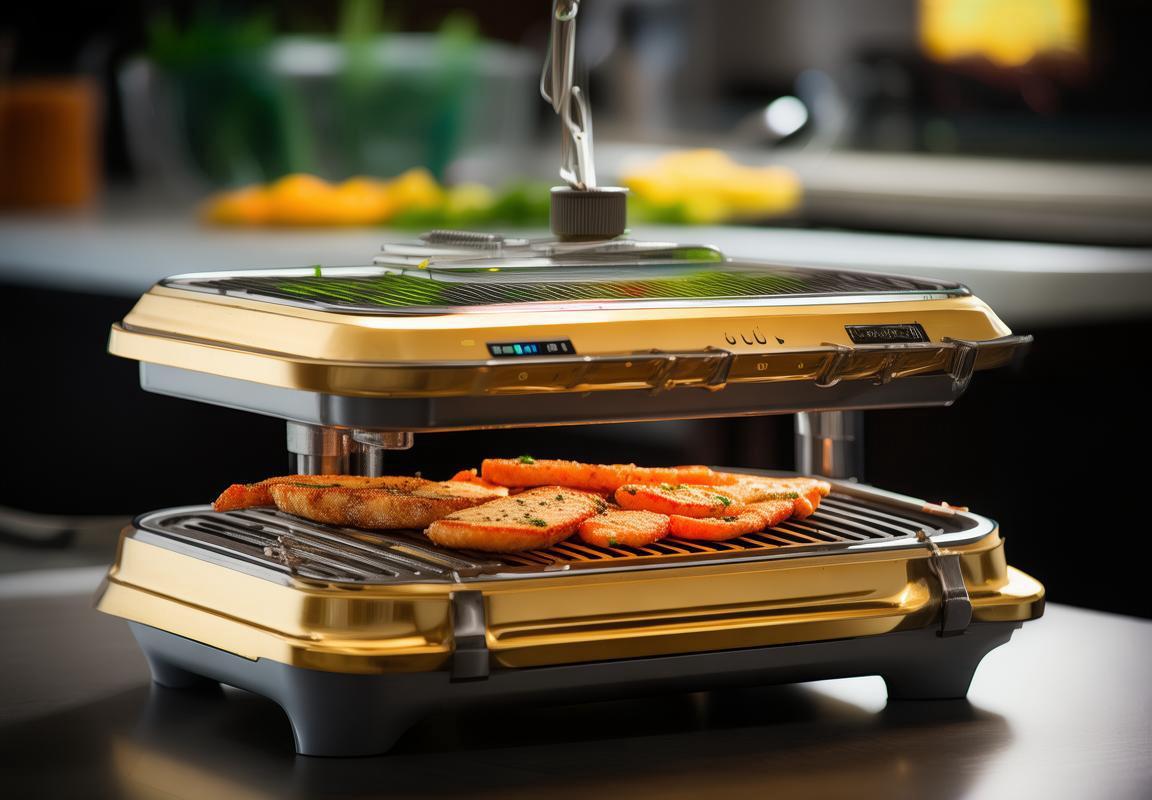
Insights from a Contact Grill Wholesaler
In the ever-evolving world of kitchen appliances, contact grills have emerged as a favorite among both professional chefs and home cooks. As a contact grill wholesaler, I’ve had the unique opportunity to witness the market dynamics firsthand. Here are some insights that I’ve gathered over the years.
The demand for contact grills has surged, primarily due to their ability to mimic the taste and texture of traditional grilling while providing a convenient cooking method. This trend is particularly strong in urban areas where space is limited, and people are looking for ways to enjoy a variety of flavors without the need for a large outdoor grill.
One of the most striking trends I’ve observed is the increasing preference for high-quality materials in contact grills. Consumers are no longer satisfied with basic models; they’re seeking grills made from durable stainless steel and featuring advanced non-stick surfaces that ensure easy cleanup and longevity.
Another significant factor in the market dynamics is the rise of health-conscious consumers. Contact grills are often seen as a healthier alternative to frying, as they allow for the cooking of food with less oil. This health focus has opened up new opportunities for us as wholesalers, as we can cater to this growing demand by offering a variety of models that meet different dietary needs.
Customization has become a key aspect of the contact grill market. Consumers are not only interested in the quality and functionality of the grill but also in how it fits their personal style. We’ve seen a surge in sales of contact grills with sleek designs and customizable features, such as temperature control and removable plates for easy cleaning.
The competition within the contact grill market is fierce, with several well-established brands and numerous emerging players. As a wholesaler, we must stay informed about the latest innovations and be able to offer a wide range of products to meet our clients’ diverse needs. This means keeping a pulse on market trends and being willing to adapt our inventory accordingly.
In recent years, there’s been a notable increase in eco-friendly and sustainable products. We’ve seen a shift towards contact grills that are energy-efficient and made from recycled materials. This green trend has become a significant selling point, and we’ve incorporated more of these eco-friendly models into our offerings.
The role of online shopping has also played a pivotal role in the contact grill market. Many consumers are turning to e-commerce for their purchasing needs, which has led to a surge in online sales. As a wholesaler, we’ve had to ensure that our product range is readily available through various online platforms, and we’ve also invested in enhancing our own e-commerce presence.
Another dynamic to consider is the importance of brand partnerships. We’ve developed strong relationships with various kitchenware and barbecue brands, which not only helps us to offer a broader range of complementary products but also allows us to provide integrated solutions for our clients.
Lastly, customer service has never been more crucial. With the rise of online reviews and social media, a positive customer experience can make or break a brand. As a contact grill wholesaler, we’ve placed a strong emphasis on providing exceptional service, from handling orders efficiently to offering after-sales support.
In summary, the contact grill market is dynamic and multifaceted, requiring wholesalers to stay informed, adaptable, and customer-focused. From material quality to eco-friendliness and online sales, the landscape continues to change, and it’s essential for us to navigate these waters with precision and foresight.
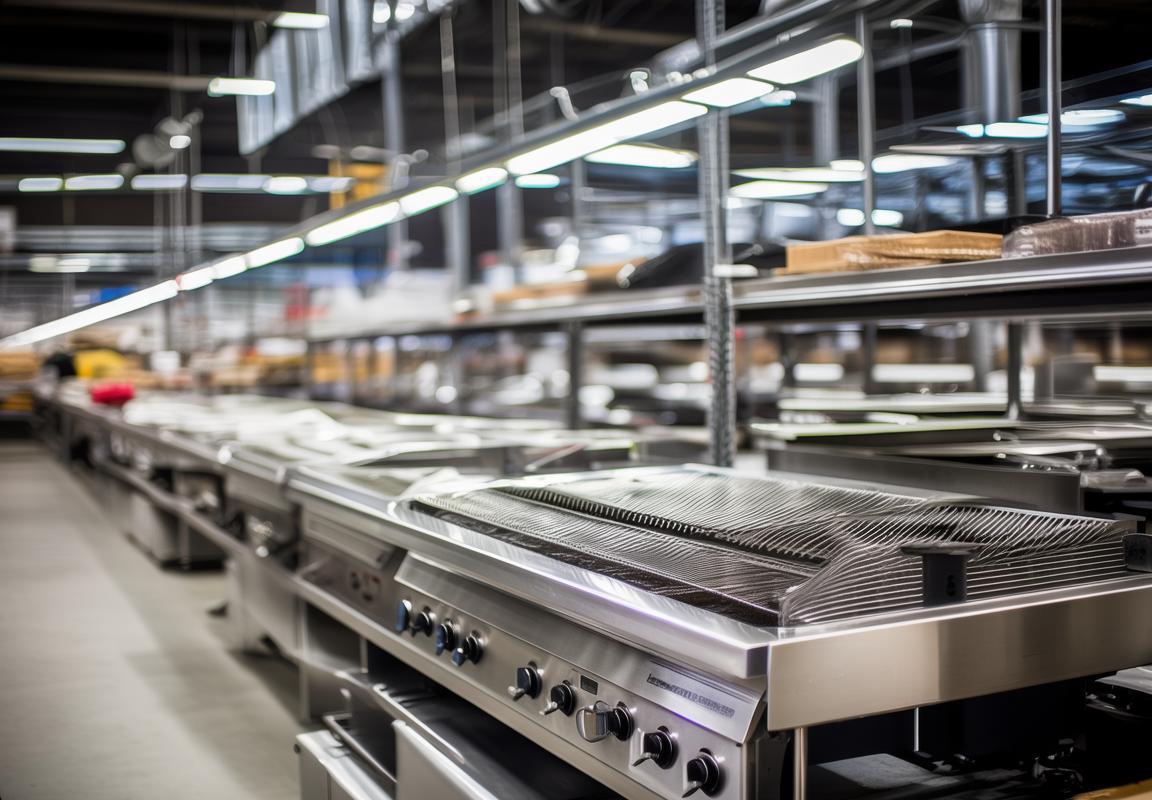
Market Analysis: Sales Data and Consumer Preferences
The contact grill market has seen a surge in sales, driven by consumer preferences that favor convenience, health, and versatility. Let’s delve into the sales data and preferences shaping this dynamic sector.
Consumer demand for healthier cooking methods has been on the rise, and contact grills have capitalized on this trend. With their ability to cook food with minimal oil, these grills have become a favorite among health-conscious consumers. Sales figures reflect a steady increase in the sale of contact grills, particularly in urban areas where fast-paced lifestyles are prevalent.
The preference for convenience is another key driver in the contact grill market. These grills offer a quick and easy way to prepare a variety of dishes, from steaks to vegetables. The compact size and ease of use make them a popular choice for individuals and families alike. Sales data indicates a strong correlation between the convenience factor and the growth in contact grill sales.
The rise of outdoor living has also played a significant role in the market dynamics. As people spend more time entertaining and cooking outdoors, contact grills have become a staple in many households. Sales spikes during summer months and at outdoor events underscore the importance of these grills in the consumer’s outdoor cooking routine.
Technology has not been left out in the contact grill market. Smart grills with built-in thermometers and timers are becoming increasingly popular, as they provide users with greater control over the cooking process. Sales of these high-tech grills are growing, driven by consumers who are willing to invest in the latest innovations.
When it comes to consumer preferences, there’s a noticeable trend towards eco-friendly and sustainable products. Contact grills made from recycled materials or with energy-efficient features are gaining traction. Sales data shows that environmentally conscious consumers are more likely to choose these eco-friendly options, reflecting a broader shift in purchasing behaviors.
The preference for variety is also a significant factor. Contact grills come in various sizes, shapes, and designs, catering to different cooking needs and preferences. Sales are driven by grills that offer multiple cooking surfaces and adjustable heat settings, allowing users to experiment with different cooking techniques. The ability to grill, sear, and bake in one appliance is a major draw for consumers looking to simplify their kitchen gadgets.
Price sensitivity remains a crucial aspect of the contact grill market. While premium models with advanced features are selling well, there’s also a strong demand for more affordable options. Sales data reveals that a wide price range caters to different consumer budgets, ensuring that contact grills are accessible to a broader audience.
In the realm of brand loyalty, contact grill manufacturers are finding that offering a range of products that appeal to various segments of the market is key. Sales are often driven by brands that have established a reputation for quality and innovation. Consumers are more likely to return to brands they trust, especially when it comes to kitchen appliances that are used frequently.
Lastly, the importance of online shopping cannot be overstated. With the rise of e-commerce, sales of contact grills have seen a significant boost. Consumers appreciate the convenience of shopping online, especially for items like kitchen appliances that can be expensive and require careful consideration. Online sales data shows a steady increase in the number of contact grills being purchased through digital channels.
In summary, the contact grill market is thriving due to a combination of health-conscious consumers, a preference for convenience, outdoor living trends, technological advancements, environmental awareness, variety, price sensitivity, brand loyalty, and the rise of online shopping. These factors, as reflected in sales data, paint a picture of a dynamic and evolving market that is set to continue growing in the coming years.
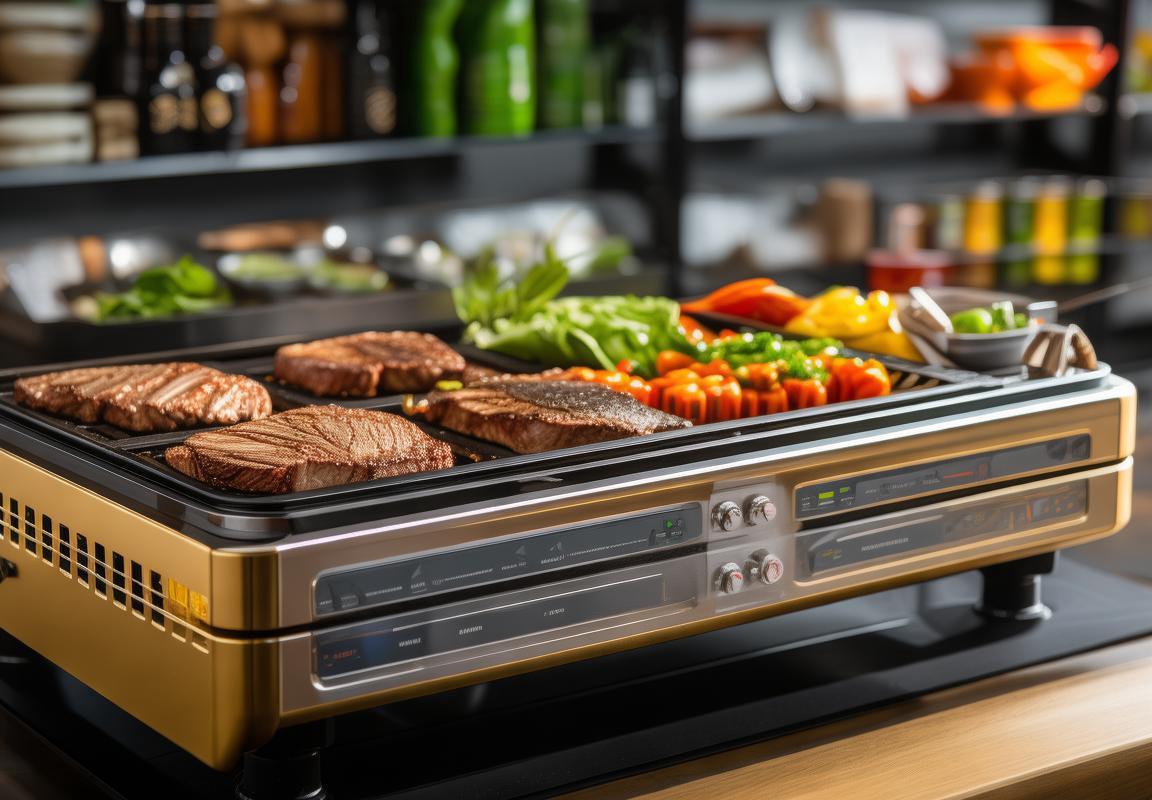
The Role of Wholesalers in the Contact Grill Supply Chain
Wholesalers play a pivotal role in the contact grill supply chain, acting as a bridge between manufacturers and retailers, ensuring the seamless flow of products to the end consumer. Their involvement encompasses various crucial aspects that are essential for the success of the entire industry.
The first critical function of wholesalers is to aggregate products from multiple manufacturers. They source contact grills from various suppliers, often purchasing in bulk to secure competitive pricing. This aggregation not only provides a wider variety of products but also allows them to offer a comprehensive selection to retailers, who in turn can cater to a diverse consumer base.
Efficient logistics and distribution are at the heart of a wholesaler’s operations. They manage the transportation of contact grills from the manufacturers to their warehouses, ensuring that the products are stored in optimal conditions. This involves coordinating with shipping companies, managing inventory, and maintaining a system that minimizes lead times. By doing so, wholesalers help to reduce the risk of stockouts for retailers and ensure that products are available when customers are looking to make purchases.
Another key role of wholesalers is to provide value-added services. They often offer packaging solutions, branding services, and even product customization to enhance the appeal of contact grills to retailers. This can include repackaging products with new labels, incorporating additional marketing materials, or even offering special promotional items that can boost sales.
Wholesalers also act as a buffer against market fluctuations. By purchasing products in large quantities, they can absorb price changes and pass on more favorable terms to retailers. This stability is particularly important in the contact grill market, where consumer trends and preferences can shift rapidly. Wholesalers can adjust their inventory levels to meet these changes, ensuring that retailers always have access to the latest models and innovations.
The relationship between wholesalers and retailers is often built on trust and long-term partnerships. Wholesalers may provide personalized service, such as tailored marketing strategies or financial incentives, to ensure that retailers remain loyal. This can include exclusive deals, discounts for bulk orders, or even co-branded promotions that can increase the visibility of both the retailer and the wholesaler.
In addition to serving retailers, wholesalers also play a role in customer satisfaction. By ensuring that contact grills are readily available and in good condition, they help retailers maintain a high level of customer service. This can include handling returns, providing technical support, and facilitating warranty claims, all of which contribute to the overall consumer experience.
Wholesalers also contribute to market research and trend analysis. They gather data on sales, consumer preferences, and market demand, which they can use to inform their purchasing decisions and those of their suppliers. This forward-thinking approach allows wholesalers to anticipate future trends and stock products that are likely to be in high demand, thus reducing the risk of inventory obsolescence.
Moreover, wholesalers often serve as a source of financing for retailers. They may offer credit terms, allowing retailers to purchase inventory without immediate payment, which can be particularly beneficial for small businesses with limited capital. This financial flexibility can help retailers manage their cash flow more effectively and invest in marketing or other business growth strategies.
In the face of globalization, wholesalers also facilitate international trade. They can source contact grills from manufacturers around the world, providing retailers with access to a global market. This international presence allows wholesalers to offer a wider range of products and to adapt to the unique preferences of different regions.
Lastly, wholesalers are instrumental in maintaining quality control. They often have stringent quality standards and perform inspections to ensure that the contact grills they distribute meet these requirements. This oversight is crucial in the contact grill industry, where safety and performance are paramount.
In summary, wholesalers in the contact grill supply chain are multifaceted partners who contribute significantly to the industry’s success. Their role in aggregation, logistics, value-added services, market stability, and customer satisfaction cannot be overstated. As the market for contact grills continues to evolve, wholesalers will remain a critical link in the chain, ensuring that the right products are in the hands of the right retailers, and ultimately, in the homes of satisfied consumers.
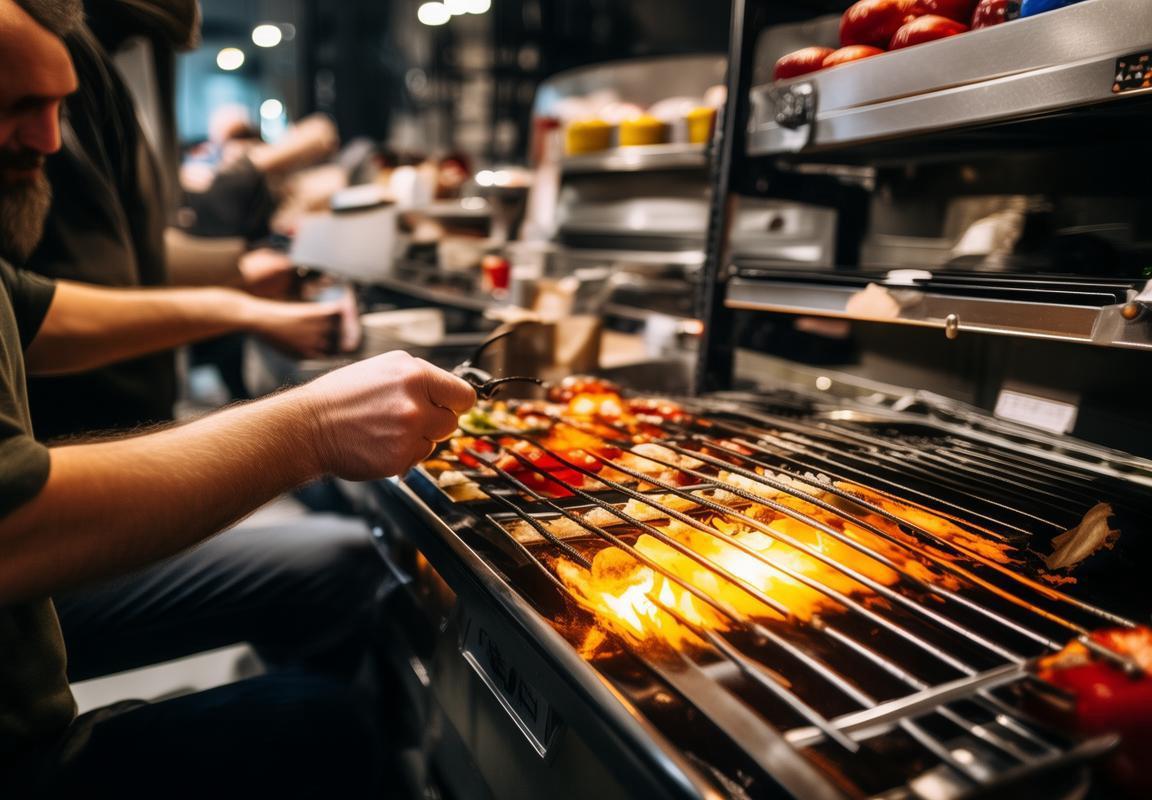
Future Outlook: Predictions for the Contact Grill Market
The future of the contact grill market appears to be bright, with several factors shaping its trajectory. Here’s a closer look at the potential trends and predictions for the industry.
The increasing demand for healthy and convenient cooking solutions is a major driving force. As consumers become more health-conscious, they seek out cooking methods that offer minimal oil usage and quick preparation times. Contact grills, with their ability to cook food directly on the surface without excessive oil, align perfectly with these preferences.
Technological advancements are expected to play a significant role. Innovations such as non-stick surfaces, adjustable heat settings, and built-in safety features are likely to become standard in new contact grill models. These improvements could attract a broader audience, including those who are not yet familiar with the product.
E-commerce has revolutionized the way consumers purchase products, and this trend is expected to continue in the contact grill market. Online sales are projected to grow, with more manufacturers and wholesalers expanding their digital presence. This shift allows consumers to access a wider variety of contact grills from the comfort of their homes, potentially boosting sales.
The rise of outdoor cooking and the popularity of barbecues are also contributing factors. Contact grills, with their portability and ease of use, are a perfect complement to these activities. As people continue to seek outdoor experiences, the demand for contact grills may see a significant uptick during the warmer months.
Sustainability is another factor that could influence the contact grill market. With the growing awareness of environmental issues, manufacturers that adopt eco-friendly practices or produce grills with recyclable materials might gain a competitive edge. This could lead to an increase in demand for greener cooking solutions.
Demographic shifts, such as the aging population and the rise of single-parent households, are likely to impact the market as well. Older adults often prefer appliances that are easy to use and maintain, while single parents might appreciate the quick and efficient cooking options that contact grills offer.
Globalization is also at play, as the popularity of contact grills in certain regions may spread to others. For example, the success of contact grills in North America and Europe might inspire interest in other parts of the world, leading to a broader market reach.
In the professional kitchen sector, contact grills are increasingly being adopted for their versatility. Chefs and restaurateurs are recognizing the benefits of these appliances in creating high-quality, fast-cooked dishes. This trend could potentially extend to home kitchens, as consumers look to emulate the culinary experience of fine dining at home.
International collaborations and partnerships are another aspect to consider. As manufacturers look to expand their market share, they may enter into agreements with local retailers or distributors to better serve specific regions. This could lead to a more diverse and robust supply chain.
Finally, the contact grill market is likely to see continued innovation in design and functionality. From portable and compact models to larger, commercial-grade units, there’s a wide range of possibilities for product development. The ability to adapt to changing consumer needs and preferences will be crucial for success in the future.
In conclusion, the contact grill market is poised for growth, driven by health-conscious consumers, technological advancements, e-commerce, outdoor cooking trends, sustainability, demographic shifts, globalization, and industry innovation. As the market evolves, so too will the role of wholesalers, who will need to stay abreast of these trends to ensure they remain a vital link in the supply chain.
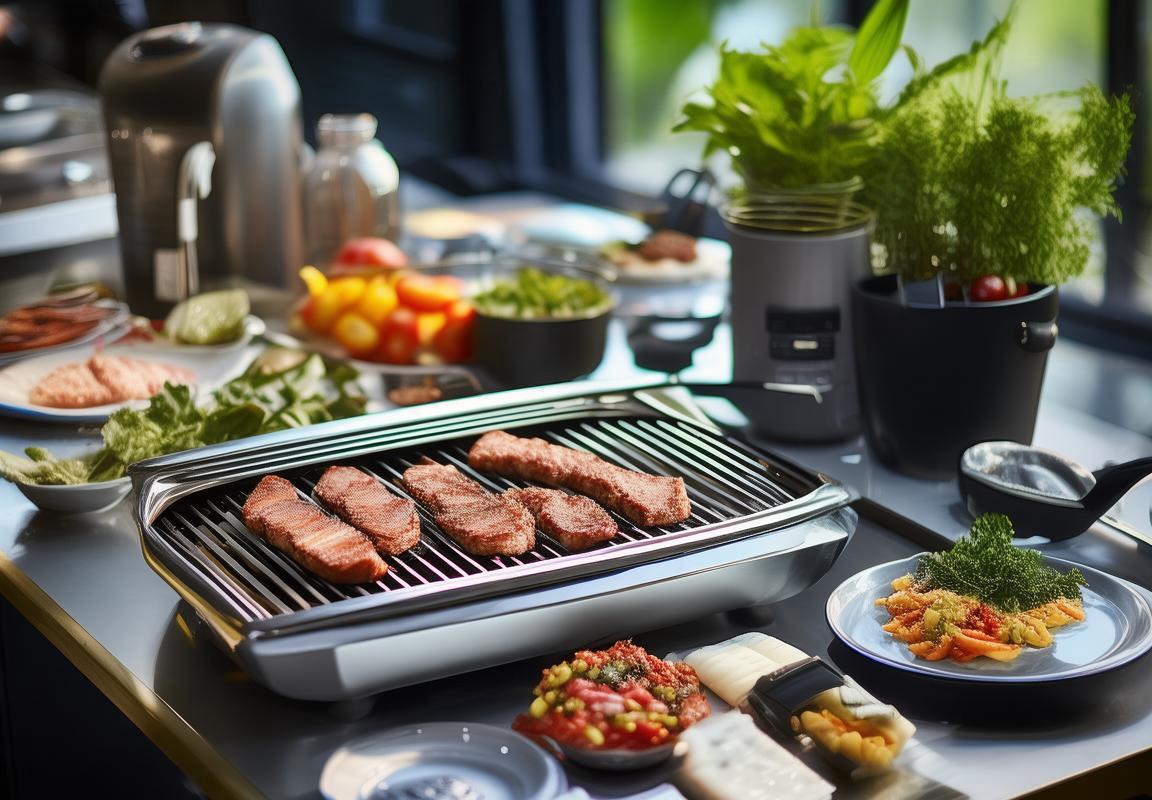
Key Challenges and Opportunities for Contact Grill Wholesalers
In the dynamic world of contact grill wholesaling, several challenges and opportunities coexist, shaping the landscape for businesses in this niche market. Navigating these complexities requires a strategic approach and a keen understanding of the industry’s pulse.
Consumer Trends and Preferences Evolving RapidlyThe preferences of consumers are continuously shifting, and contact grill wholesalers must stay abreast of these changes. From a focus on health and wellness to the demand for convenience, understanding these trends is crucial. Offering a range of products that cater to diverse tastes and dietary needs can be a game-changer for wholesalers.
Competitive Pricing and Profit MarginsMaintaining competitive pricing while ensuring healthy profit margins is a delicate balance. Wholesalers need to find the sweet spot between cost efficiency and profitability. Leveraging bulk purchasing and efficient logistics can help reduce costs, but wholesalers must also consider the market’s pricing pressure to remain competitive.
Supply Chain Disruptions and ReliabilitySupply chain disruptions have become more prevalent, and contact grill wholesalers must be prepared for these challenges. Finding reliable suppliers who can guarantee timely delivery and product quality is vital. Diversifying the supply base and having contingency plans can mitigate risks associated with supply chain disruptions.
Regulatory Compliance and Safety StandardsCompliance with health and safety regulations is non-negotiable in the foodservice industry. Wholesalers must ensure that all contact grills meet the necessary standards, which can be a complex process, especially with the introduction of new products and materials. Keeping up with evolving regulations is an ongoing challenge but also an opportunity to provide customers with peace of mind.
Marketing and BrandingEffective marketing and branding are key to standing out in a crowded market. Wholesalers need to develop strong brand identities and marketing strategies that resonate with their target audience. Utilizing social media, influencer partnerships, and targeted advertising can help build brand awareness and loyalty.
Technological IntegrationThe integration of technology in the supply chain is reshaping the industry. Contact grill wholesalers can leverage technology to streamline operations, from inventory management to customer relationship management (CRM) systems. Embracing e-commerce and mobile applications can also open new sales channels and enhance customer experiences.
Sustainability and Eco-Friendly PracticesSustainability is becoming a more significant concern for consumers and businesses alike. Wholesalers who adopt eco-friendly practices, such as sourcing from sustainable suppliers or offering energy-efficient products, can gain a competitive edge. This opportunity lies in meeting the growing demand for environmentally conscious products and services.
Market Expansion and New TerritoriesExpanding into new markets or territories can be a significant opportunity for contact grill wholesalers. Researching and targeting emerging regions with a growing interest in contact grills can lead to new business opportunities. However, this expansion requires a deep understanding of local regulations, consumer preferences, and market dynamics.
Innovation in Product Design and FunctionalityInnovation is a driving force in the contact grill market. Wholesalers who can offer the latest in product design and functionality will appeal to consumers and retailers alike. This could involve anything from improved cooking surfaces to smart features that enhance user experience. Staying ahead of the curve in innovation is key to maintaining a competitive edge.
Customer Service and SupportProviding exceptional customer service and support is critical for building long-term relationships with retailers and end-users. Wholesalers who offer reliable after-sales service, technical support, and training can foster loyalty and trust. This aspect of the business is often overlooked but can be a significant differentiator.
Economic Fluctuations and Market StabilityEconomic fluctuations can impact the demand for contact grills. Wholesalers must be prepared to adapt to changes in the market, whether it’s a recession or a surge in consumer spending. Diversifying product lines and markets can help mitigate the risk of economic downturns.
By addressing these challenges and capitalizing on these opportunities, contact grill wholesalers can position themselves for success in an ever-evolving industry. It’s a delicate dance of staying informed, adapting, and innovating to meet the needs of a discerning market.

Case Studies: Successful Contact Grill Wholesaling Strategies
In the ever-evolving landscape of the contact grill market, wholesalers have had to adapt and innovate to stay ahead. Here are some case studies showcasing successful strategies employed by contact grill wholesalers:
-
Building Strong Distributor Relationships: One successful wholesaler focused on fostering long-term relationships with its distributors. By providing exceptional customer service, regular training sessions, and personalized support, they were able to create a network of loyal partners who consistently recommended their products to retailers.
-
Leveraging E-commerce Platforms: Recognizing the shift towards online shopping, a contact grill wholesaler invested in a user-friendly e-commerce platform. This allowed them to reach a broader audience, offer competitive pricing, and provide a seamless purchasing experience. The result was a significant increase in online sales and a new customer base.
-
Targeted Marketing Campaigns: A contact grill wholesaler noticed a growing demand for outdoor cooking products. They developed targeted marketing campaigns that highlighted the convenience and versatility of contact grills for outdoor enthusiasts. By showcasing how the grills could be used for camping, tailgating, and backyard barbecues, they successfully captured the interest of a niche market.
-
Innovative Product Packaging: A wholesaler faced the challenge of protecting their contact grills during transit. They invested in innovative packaging solutions that not only ensured the safety of the product but also enhanced its appeal. The unique packaging became a conversation starter, leading to increased brand recognition and sales.
-
Collaboration with Local Events: To boost brand visibility and sales, a contact grill wholesaler collaborated with local food festivals and community events. They provided sponsorships and promotional materials, which allowed them to showcase their products to a large, engaged audience. This strategy not only increased sales but also built a positive brand image within the community.
-
Offering Customization Options: A key strategy for a contact grill wholesaler was to offer customization options to their customers. By allowing retailers to choose from various grill sizes, colors, and features, they were able to cater to specific market needs. This flexibility made their products stand out and helped them secure contracts with a wide range of retailers.
-
Focus on Sustainability: In response to the growing trend of sustainability, a contact grill wholesaler introduced eco-friendly packaging and emphasized the energy-efficient features of their products. They also partnered with recycling programs to ensure that their packaging was properly disposed of. This focus on sustainability resonated with environmentally conscious consumers and retailers, leading to increased sales and brand loyalty.
-
Investing in Research and Development: To stay competitive, a contact grill wholesaler dedicated significant resources to research and development. By constantly improving their product line with new features and technologies, they were able to keep up with market trends and consumer demands. This commitment to innovation helped them maintain a leading position in the market.
-
Engaging with Social Media Influencers: Recognizing the power of social media, a contact grill wholesaler partnered with influencers who had a strong following in the cooking and outdoor living spaces. These influencers showcased the products in their content, providing authentic endorsements that helped drive sales and brand awareness.
-
Data-Driven Decision Making: A successful contact grill wholesaler made it a priority to collect and analyze data on consumer preferences, market trends, and sales performance. By using this data to inform their business decisions, they were able to optimize their inventory, marketing strategies, and customer service, leading to improved overall performance.
These case studies demonstrate the diverse strategies that contact grill wholesalers have employed to achieve success. From building strong relationships to leveraging technology and focusing on sustainability, these wholesalers have shown that with the right approach, they can thrive in a dynamic market.
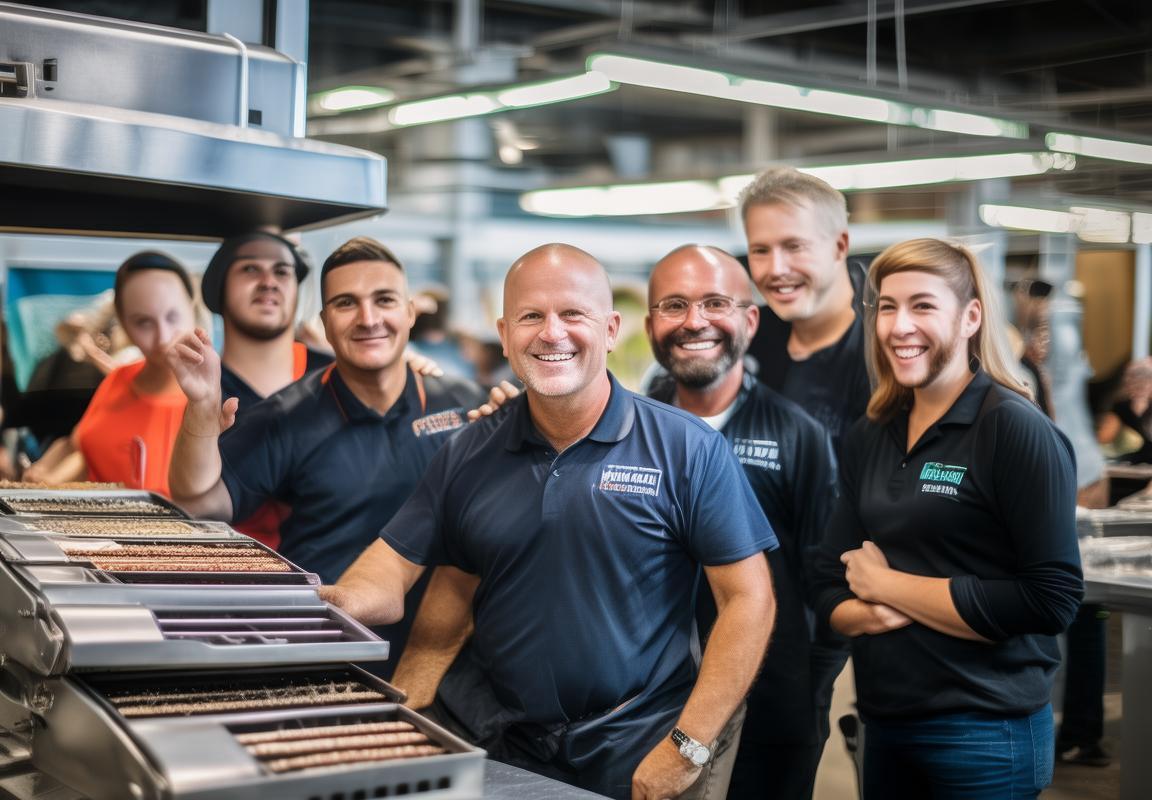
Tips for Contact Grill Wholesalers
Understanding the complexities of the contact grill market requires a nuanced approach. Here are some insights from industry professionals that highlight the challenges and opportunities for contact grill wholesalers:
-
Diversify Your Product LineWholesalers should consider offering a variety of contact grill models and accessories to cater to different consumer needs. From high-end models with advanced features to budget-friendly options, a diverse product range can attract a broader customer base.
-
Stay Informed About Market TrendsKeeping up with the latest trends in kitchen appliances is crucial. Understanding which features are in demand, such as non-stick coatings, digital controls, or portability, can help wholesalers anticipate consumer preferences and stock accordingly.
-
Focus on Quality and ReliabilityConsumers looking to purchase a contact grill are often seeking a long-lasting and durable product. Wholesalers should prioritize brands and models that are known for their quality and reliability, ensuring customer satisfaction and repeat business.
-
Build Strong Relationships with ManufacturersA solid partnership with manufacturers can be a game-changer. By securing exclusive deals or bulk purchase discounts, wholesalers can offer competitive pricing to their customers while maintaining healthy profit margins.
-
Utilize Effective Marketing StrategiesMarketing is key to standing out in a crowded market. Wholesalers should leverage social media, online advertising, and local events to showcase their products. Testimonials, demonstrations, and product reviews can also be powerful tools in building trust with potential buyers.
-
Offer Excellent Customer ServicePrompt and helpful customer service can make or break a business. Wholesalers should ensure their team is well-trained to handle inquiries, provide technical support, and address any issues promptly.
-
Adapt to Changing Consumer DemographicsThe contact grill market isn’t homogeneous. Wholesalers need to be aware of demographic shifts and tailor their offerings to specific customer segments. For instance, focusing on health-conscious consumers might involve highlighting features like adjustable heat settings for grilling a variety of foods.
-
Explore New Distribution ChannelsE-commerce has revolutionized the way products are sold. Wholesalers should consider establishing an online presence or partnering with e-commerce platforms to reach a wider audience. This also allows for direct-to-consumer sales, which can be a significant revenue stream.
-
Stay Compliant with Safety RegulationsSafety is paramount in the kitchen appliance industry. Wholesalers must ensure that all products comply with local and international safety standards, reducing the risk of recalls and protecting their brand reputation.
-
Be Ready for Seasonal FluctuationsDemand for contact grills can vary seasonally. Understanding these trends can help wholesalers manage inventory and plan their sales strategies accordingly. For example, peak seasons might be during warmer months when outdoor grilling is more popular.
-
Invest in Training and DevelopmentContinuously training your sales team on the latest products and industry knowledge can enhance their ability to sell effectively. This investment pays off in more informed customers and higher sales conversions.
-
Focus on Energy EfficiencyWith growing environmental concerns, energy-efficient appliances are becoming increasingly popular. Wholesalers should look for contact grill models that offer energy-saving features to appeal to eco-conscious consumers.
-
Collaborate with RetailersBuilding strong relationships with retail partners can lead to better shelf placement and increased visibility for contact grill products. Collaborative marketing efforts can also boost sales and brand recognition.
-
Keep an Eye on Technological AdvancesTechnology is rapidly evolving, and new innovations can disrupt the market. Wholesalers should stay abreast of emerging technologies and be prepared to adapt their offerings to incorporate these advancements.
-
Offer After-Sales SupportProviding after-sales support, such as warranty services or maintenance tips, can create a loyal customer base. Wholesalers who offer comprehensive support services can differentiate themselves from competitors.
By considering these strategies, contact grill wholesalers can navigate the market with confidence, capitalizing on opportunities while mitigating risks. The key is to remain adaptable, informed, and customer-focused in an ever-changing industry landscape.
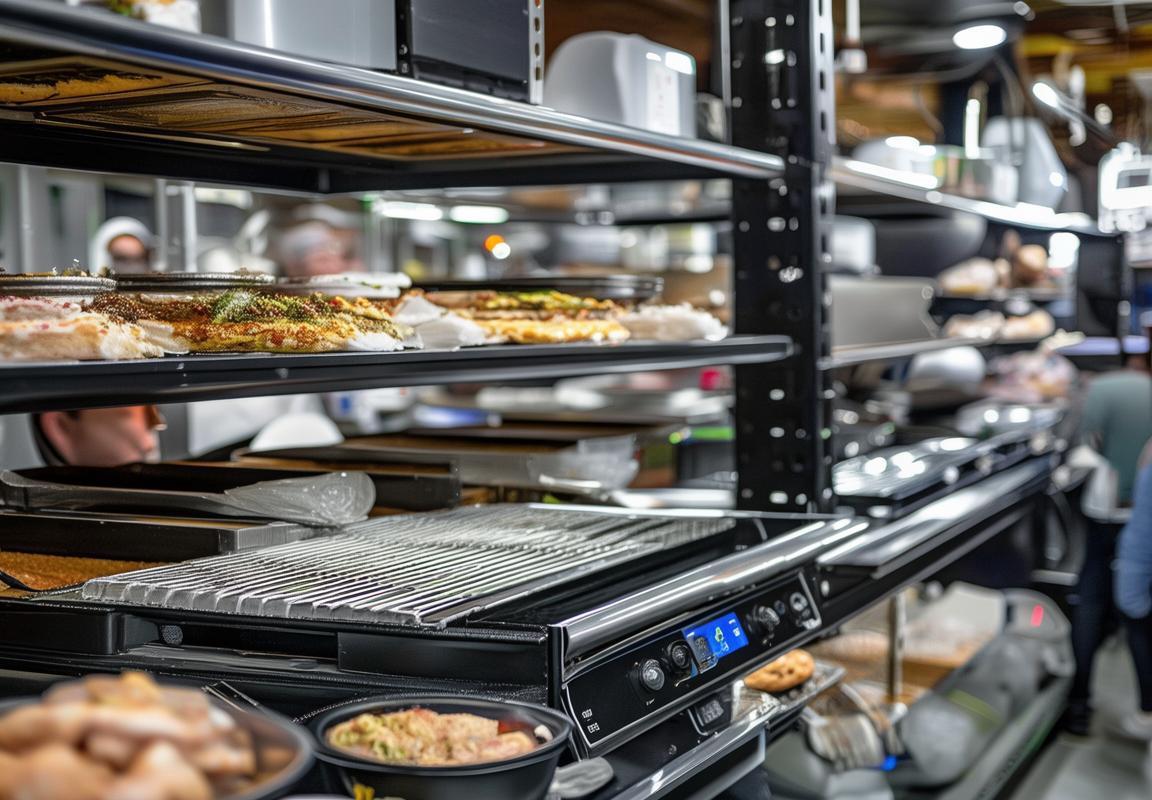
Conclusion
In the world of contact grill wholesalers, the path to success is paved with strategic planning, adaptability, and a keen understanding of the market. Here are some insights that encapsulate the essence of what it takes to thrive in this dynamic industry.
The importance of staying abreast of technological advancements cannot be overstated. As new features and innovations emerge, wholesalers must be quick to integrate them into their product offerings, ensuring that they remain at the forefront of market trends. For instance, the integration of smart technology in contact grills has become a game-changer, allowing for enhanced user experiences and increased convenience.
Building strong relationships with suppliers is a cornerstone of success. A reliable supply chain is crucial, and wholesalers who foster open communication and mutual respect with their suppliers often enjoy better pricing, product availability, and support. This collaborative approach can lead to more efficient operations and the ability to meet customer demands swiftly.
Customer service is paramount in the contact grill business. Wholesalers need to ensure that their customers receive not only high-quality products but also exceptional service. This includes everything from prompt order fulfillment to offering technical support and after-sales care. A reputation for outstanding customer service can lead to repeat business and word-of-mouth referrals, which are invaluable in a competitive market.
The ability to adapt to changing consumer preferences is critical. Trends come and go, and wholesalers must be able to pivot their strategies accordingly. For example, the rise of health-conscious eating habits has led to a demand for contact grills that offer versatile cooking options and allow for healthier cooking methods like grilling without oil.
In terms of marketing, leveraging the power of social media and online platforms is non-negotiable. Wholesalers need to establish a strong online presence to reach a wider audience. This can include creating engaging content, showcasing product features, and engaging with customers through interactive posts. Online reviews and testimonials can also play a significant role in building trust and credibility.
Another vital aspect is inventory management. Efficient stock control ensures that wholesalers have the right amount of product on hand at all times, avoiding overstocking or stockouts. Utilizing inventory management software can help track sales data, predict demand, and make informed purchasing decisions.
Sustainability has become a key concern for many consumers and businesses alike. Wholesalers who can offer eco-friendly and energy-efficient contact grills will likely see a competitive edge. Investing in sustainable practices within their operations, such as reducing packaging waste or using renewable energy sources, can also enhance their brand image.
Training staff is an ongoing process that can significantly impact a wholesaler’s success. Employees should be well-versed in product knowledge, sales techniques, and customer service skills. A well-trained team can handle inquiries, provide demonstrations, and close sales more effectively.
Networking within the industry is another valuable strategy. Attending trade shows, joining industry associations, and participating in forums can provide wholesalers with insights into emerging trends, new product launches, and potential partnerships.
Lastly, wholesalers must remain agile and ready to embrace new opportunities. This could mean expanding into new markets, diversifying their product range, or even exploring new business models. The contact grill market is continually evolving, and those who are willing to innovate and take calculated risks are more likely to achieve long-term growth and profitability.
In conclusion, the world of contact grill wholesaling is multifaceted, requiring a blend of strategic thinking, market awareness, and customer-centric approaches. By focusing on these key areas and staying committed to excellence, wholesalers can navigate the complexities of the market and build a business that stands the test of time.